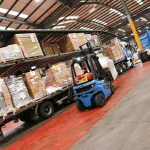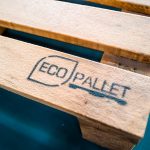
13 Eco-Friendly Packaging Metrics That Actually Matter (And How to Track Them)
Introduction: Turning Sustainability Promises into Measurable Packaging Impact
Sustainable packaging isn’t just a trend—it’s a business requirement. Governments, retailers, and consumers now expect measurable proof of eco-friendly practices.
But how do you measure your progress beyond vague claims like “green” or “eco”?
This guide walks you through 13 packaging metrics that actually matter—and shows how companies like Deka Kraft, with its innovative heat-treated wooden pallets, exemplify real sustainability in action.
Let’s turn your intentions into measurable impact.
Step 1: Define What Eco-Friendly Packaging Means for Your Business
Before you can measure, you need to define:
- What “sustainable” means in your product category
- Which standards matter (e.g., ISO 18601, ASTM D6400, FSC, PEFC)
- Regulatory expectations (e.g., EU Packaging and Waste Directive, U.S. FTC Green Guides)
Start by mapping compliance needs and customer expectations.
Step 2: Map Your Packaging Lifecycle
Use a cradle-to-grave or cradle-to-cradle approach:
- Raw material extraction
- Manufacturing
- Distribution and logistics
- End-of-life (recycling, composting, landfill)
With Deka Kraft wooden pallets, for example, sourcing is from renewable forests, processing uses minimal water, and the pallets are reusable and recyclable.
Step 3: Identify and Prioritize the 13 Key Metrics
Here are the most impactful packaging sustainability metrics:
| Metric | Why It Matters |
|---|---|
| Recyclability Rate | Ensures materials don’t go to landfill |
| PCR Content | Reduces raw resource dependence |
| Packaging-to-Product Ratio | Optimizes efficiency and reduces waste |
| Renewable Material % | Supports resource regeneration |
| Carbon Footprint | Gauges total environmental cost |
| Compostability | Supports zero-waste goals |
| Water Usage | Minimizes environmental strain |
| Energy Use | Lowers production emissions |
| Waste Recovery | Drives circular economy efforts |
| Chemical Safety | Protects health and ecosystems |
| Local Sourcing | Reduces emissions and delays |
| Durability vs. Impact | Avoids over-packaging |
| Consumer Education | Drives proper disposal |
Step 4–15: Practical Metric Tracking + Deka Kraft Insights
Step 4: Recyclability Rate
Check each material against local recycling systems.
Deka Kraft pallets: 100% recyclable wood, easily repurposed into furniture or biomass fuel.
Step 5: PCR Content
Ensure supplier claims are GRS-certified.
Deka Kraft uses clean, untreated virgin timber for long-life cycles, but may soon introduce PCR hybrid pallets.
Step 6: Packaging-to-Product Ratio
Slim packaging reduces shipping volume.
Using custom-sized pallets from Deka Kraft helps match your packaging needs without excess.
Step 7: Renewable Material Percentage
Track percentage from renewable sources.
Deka Kraft pallets are made from sustainably harvested, heat-treated wood, certified by FSC.
Step 8: Carbon Footprint
Use LCA tools like SimaPro or OpenLCA.
Deka Kraft tracks emissions during logging, transport, and heat treatment, aiming for carbon neutrality.
Step 9: Compostability and Biodegradability
Verify via BPI, OK Compost, or ASTM D6400.
While wood isn’t compostable in urban settings, Deka Kraft pallets biodegrade naturally in soil environments after years of use.
Step 10: Water and Energy Consumption
Deka Kraft’s closed-loop system reduces water use by over 50% versus traditional pallet manufacturing.
Step 11: Waste Recovery Rate
Track how many pallets are returned or reused.
Deka Kraft offers buy-back and repair programs to increase recovery rates.
Step 12: Chemical Safety
Avoid toxic finishes.
Deka Kraft uses no formaldehyde adhesives or chemical sealants—just kiln-dried, heat-treated wood.
Step 13: Local Sourcing and Distribution
Sourcing wood locally reduces mileage.
Deka Kraft partners with regional sawmills to lower emissions and ensure supply chain transparency.
Step 14: Durability vs. Environmental Impact
Reusable wooden pallets last years longer than plastic wrap or foam.
Deka Kraft’s strength testing ensures load protection without excess materials.
Step 15: Consumer Education
Use QR codes to explain how to recycle or return pallets, or track packaging origin.
Deka Kraft provides scannable pallet tags with sustainability info.
Tools to Simplify Tracking of Packaging Sustainability
| Tool | Use Case |
|---|---|
| OpenLCA | Lifecycle assessment modeling |
| Ecochain | Packaging and product footprint analysis |
| SAP EHS | Enterprise tracking of compliance and sustainability |
| Deka Kraft Portal | Real-time pallet lifecycle and impact monitoring |
Integrating Packaging Metrics into ESG Reports
These 13 metrics align with:
- GRI 301, 305, and 306 standards
- CDP Supply Chain carbon tracking
- UN SDGs 12 & 13
Use Deka Kraft’s traceability data and material certifications to enhance your ESG storytelling.
FAQs on Sustainable Packaging Metrics and Deka Kraft Wooden Pallets
1. Are Deka Kraft pallets reusable?
Yes, their pallets are engineered for multiple shipment cycles—saving costs and emissions.
2. Are they certified?
They meet FSC, ISPM-15, and CE marking standards for export and phytosanitary compliance.
3. Can we track their carbon impact?
Deka Kraft offers carbon reporting dashboards to help clients track their impact.
4. What if we need custom pallet sizes?
Deka Kraft builds bespoke wooden pallets to meet exact load and sustainability goals.
5. How long do they last?
With proper use, each pallet can survive over 5 years, significantly reducing single-use waste.
6. Can they be returned or repaired?
Yes, Deka Kraft offers reverse logistics and reconditioning services.
Conclusion: Turning Metrics Into Market-Ready Sustainability with Deka Kraft Pallets
Eco-friendly packaging success doesn’t happen by accident. It’s measured—one pallet, one box, one carbon gram at a time.
By tracking these 13 powerful sustainability metrics, and working with forward-thinking partners like Deka Kraft, your brand can slash waste, prove impact, and lead in the circular economy.
Don’t just label your packaging “green”—make it measurable, repeatable, and real.





Add a comment